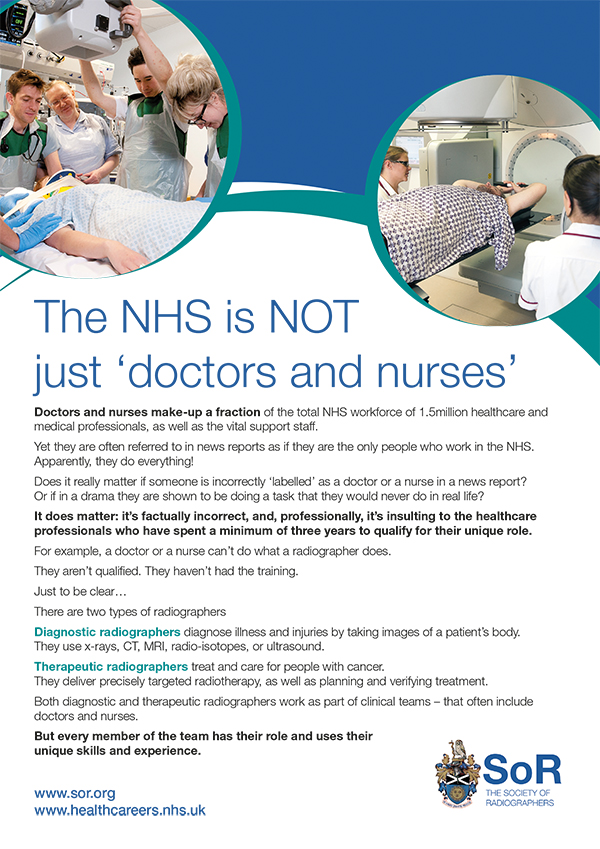In response to member frustrations about how radiographers are frequently incorrectly portrayed in the media and hospital dramas, the Society has issued guidance about how to put the record straight.
An information sheet has been published to send to journalists and directors to help them understand why radiographers are not doctors or nurses.
The initiative came about in response to Motion 26, proposed by Northern Region at this year’s Annual Delegates Conference, which said, “The media often publish incorrect or inaccurate stories about the NHS and frontline staff…
“We call upon the (UK) council to create a stronger, more visible media presence, and to respond to events in a timely and authoritative manner that reflects the policies of the organisation.”
Richard Evans, the Society’s chief executive officer, said, “There has been a growing frustration amongst SoR members about assumptions in the media and by some politicians that the NHS is only staffed by doctors and nurses.
“Also, television hospital dramas such as ‘Holby City’ and ‘Casualty’ are repeatedly criticised for a lack of factual accuracy by showing what are obviously non-radiographers carrying out radiography roles.”
The information leaflet (which can be downloaded below) explains that there are a wide variety of healthcare roles in the NHS, why it is important to correctly identify professionals, and what it is that radiographers are uniquely qualified to do.
Educating the media – and anyone else who needs to be informed
The Society recommends to members what action to take if they see or hear of an example of the media or politicians ‘getting it wrong’ by referring to ‘doctors and nurses’ as shorthand for everyone who works in the NHS, or if the role of radiographers is presented incorrectly.
- Get in touch with the organisation or the individual politely pointing out the error and providing them with the Society’s information leaflet. Contact details are usually to be found on the organisation’s/individual’s website.
- Alternatively, advise the Society by email at [email protected] providing as much detail as you can and we’ll communicate with them.
- It is recommended that if you approach them directly, the tone and content of what you send is reasonable and polite. Angry and outraged is more likely to alienate the recipient, rather than persuade them to listen and understand your point of view.
- If you do contact the offending organisation or individual direct, please do email [email protected] so that the Society can also respond as the professional body. Also, by keeping a record, over time we will be able to judge if the message is getting through and the mistakes are not being repeated. In addition, we will ask the people we contact to use us as an expert source for information about diagnostic imaging/screening or cancer treatment in the future.
